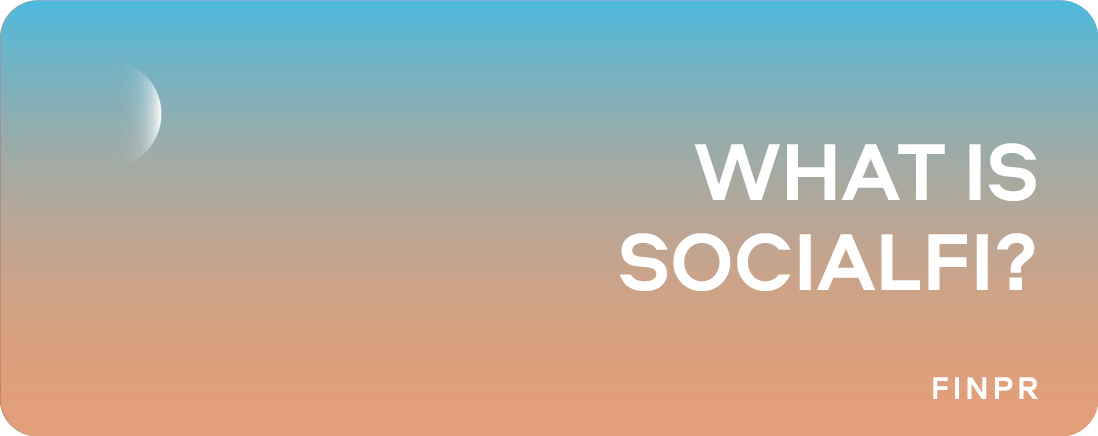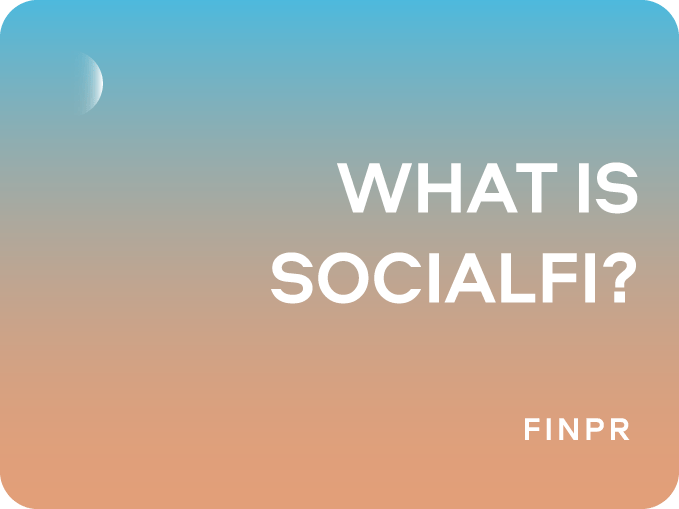
SocialFi, or Social Finance, merges social media with decentralized finance (DeFi) using blockchain technology. Unlike traditional social media platforms, SocialFi gives users control over their data, content, and interactions without relying on intermediaries, offering a more user-centric experience. By decentralizing data storage and content governance, it enhances transparency, security, and user autonomy.
Read on to understand this phenomenon!
Core Principles of SocialFi
SocialFi addresses issues like data privacy, censorship, and unfair monetization found in platforms like Facebook and Twitter.

SocialFi blends social media with decentralized finance (DeFi), transforming how we interact, share content, and monetize online presence. Its core principles — decentralization, monetization, community governance, enhanced security, and freedom of speech — make it more secure, user-centric, and equitable than traditional platforms.
1. Decentralization
SocialFi decentralizes data storage using blockchain technology, distributing data across nodes instead of centralized servers. This enhances security and privacy, giving users full control over their information and reducing the risk of data breaches and misuse.
2. Monetization
SocialFi empowers users and creators with direct financial rewards. Unlike traditional platforms that profit from ads, SocialFi uses social tokens and NFTs to monetize interactions and content. For example, users can trade social tokens representing ownership in a creator’s content, which can increase in value with popularity and engagement.
3. Community Governance
SocialFi uses Decentralized Autonomous Organizations (DAOs) for platform decisions, content moderation, and policies. In a DAO, the community votes on changes, ensuring transparency, fairness, and alignment with user interests.
4. Enhanced Security and Privacy
Blockchain technology in SocialFi provides robust security and privacy. Users control their personal data, choosing what to share, while all transactions and interactions are transparent and verifiable, preventing data exploitation for commercial gain.
5. Freedom of Speech and Censorship Resistance
SocialFi promotes freedom of speech by decentralizing content moderation. Instead of central authorities, the community oversees content, reducing the risk of arbitrary censorship and ensuring fair and transparent moderation.
Key Components of SocialFi
SocialFi integrates various elements of decentralized finance and social media, creating a robust ecosystem that offers unique functionalities and opportunities for users. Here are the key components that define SocialFi platforms:
1. Decentralized Platforms
Decentralized social media is a core aspect of SocialFi, ensuring that user data and content are managed transparently and securely through blockchain technology. These platforms store data across a network of nodes rather than on centralized servers, ensuring greater security and privacy for users. Examples of decentralized platforms in SocialFi include:
- Friend.tech: A decentralized app on the Base platform that enables users to trade social tokens and gain access to exclusive content.
- Lens Protocol: A decentralized social graph built on the Polygon blockchain that allows users to own their connections and content through NFTs.
- Theta Network: A decentralized video delivery network that leverages peer-to-peer sharing to improve streaming quality and reduce costs.
2. Tokenization
Tokenization is a central element of SocialFi, allowing users to monetize their social interactions and content through digital assets such as social tokens and NFTs (Non-Fungible Tokens). Tokenization provides users with financial incentives to participate and contribute high-quality content. Key aspects of tokenization include:
- Social Tokens: These tokens represent ownership or stakes in a creator's content and can be traded on the platform. The value of social tokens can increase based on the creator's popularity and engagement.
- NFTs: Non-Fungible Tokens are unique digital assets that represent ownership of specific pieces of content, such as art, music, or posts. NFTs provide a way for creators to monetize their work directly and securely.
3. Decentralized Autonomous Organizations (DAOs)
DAOs are pivotal in SocialFi, enabling community governance and decentralized decision-making. DAOs ensure that platform policies, content moderation, and other important decisions are made collectively by the community rather than by a central authority. Features of DAOs in SocialFi include:
- Community Voting: Users can propose and vote on changes to the platform, ensuring that governance is transparent and democratic.
- Content Moderation: Decentralized content moderation helps prevent arbitrary censorship and ensures that community standards are upheld in a fair and transparent manner.
4. Enhanced Security and Privacy
Enhanced security and privacy are fundamental components of SocialFi. By leveraging blockchain technology, SocialFi platforms ensure that user data is secure and immutable. Key benefits include:
- Data Security: Blockchain's decentralized nature reduces the risk of data breaches and unauthorized access.
- User Control: Users have full control over their personal information and can decide what data to share and with whom.
5. Decentralized Content Storage
Decentralized content storage is a crucial aspect of SocialFi, ensuring that data is stored across multiple nodes rather than in a centralized server. This not only enhances security but also prevents data from being exploited by centralized entities. Features include:
- Blockchain Storage: Content is stored on the blockchain, making it immutable and transparent.
- Reduced Data Exploitation: Decentralized storage prevents centralized entities from exploiting user data for commercial gain.
Crypto social media marketing on SocialFi platforms allows brands to leverage tokenized interactions and NFTs to engage with their audience in innovative ways.
6. Freedom of Speech and Censorship Resistance
SocialFi platforms promote freedom of speech and are resistant to censorship, ensuring that users can express themselves freely. Decentralized content moderation distributes the responsibility of managing content across the community, reducing the risk of arbitrary censorship. Features include:
- Censorship Resistance: Decentralized moderation prevents single points of control, allowing for more balanced and fair content regulation.
- Democratic Moderation: Community-based content moderation ensures that diverse viewpoints are considered and respected.
The Future of SocialFi
The future of SocialFi, an innovative fusion of social media and decentralized finance, holds significant potential for transforming how we interact, share content, and monetize online activities. Here are some key aspects and projections for the future of SocialFi:
Increased Adoption and Integration

As blockchain technology continues to evolve, SocialFi platforms are likely to see broader adoption and integration into everyday social media use. The appeal lies in the ability to provide users with greater control over their data, direct monetization opportunities, and enhanced privacy.
These features address the limitations of traditional social media platforms, making SocialFi an attractive alternative for both creators and users. And, the integration of PolitiFi into SocialFi platforms exemplifies the potential for decentralized social media to influence political discourse and engagement.
Scalability and Infrastructure Improvements
One of the main challenges for SocialFi is scalability. Current blockchain technologies must handle the vast amounts of data generated by social media interactions. Advances in blockchain scalability solutions, such as sharding and warp sync, are expected to improve the throughput and efficiency of SocialFi platforms, allowing them to support larger user bases and more complex interactions.
Enhanced Monetization Models
SocialFi's ability to monetize interactions and content through tokens and NFTs is a significant draw. Future developments will likely see more sophisticated and sustainable economic models, enabling users to earn a fair share of the revenue generated from their content and engagement. This could include more dynamic and personalized monetization options, such as token rewards for specific types of content or interactions.
Greater Focus on Decentralized Governance
Decentralized Autonomous Organizations (DAOs) will continue to play a critical role in the governance of SocialFi platforms. This model ensures that decisions about platform policies, content moderation, and other critical aspects are made transparently and democratically by the community. The evolution of DAOs will likely lead to more robust and inclusive governance frameworks, further enhancing user trust and engagement.
Expansion of Use Cases and Applications
The future of SocialFi will likely see an expansion in the types of applications and use cases. From decentralized video platforms and music-sharing services to professional networking and gaming, SocialFi has the potential to revolutionize various sectors. By integrating real-world data and creating unified identities through NFT profiles, SocialFi platforms can foster new forms of social interaction and community building.
Challenges and Opportunities
Despite its promising potential, SocialFi faces several challenges, including security risks, economic sustainability, and the need for widespread user education and adoption. Addressing these challenges will require continuous innovation and adaptation. However, the opportunities presented by SocialFi, such as enhanced freedom of speech, data sovereignty, and equitable monetization, make it a compelling area for future development.
In Summary
SocialFi is poised to reshape the future of social media, offering a more decentralized, equitable, and user-centric alternative to current platforms. As technology and adoption continue to advance, SocialFi has the potential to become a cornerstone of the digital landscape, empowering users and transforming online interactions for the better.




